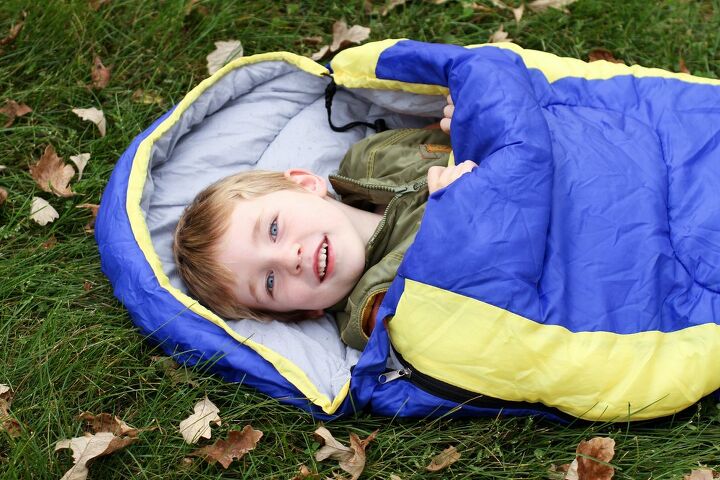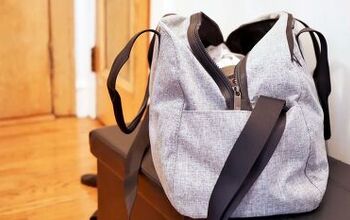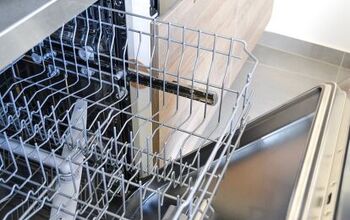Can You Wash A Sleeping Bag In A Top Load Washer? (Find Out Now!)

Any avid camper knows a decent sleeping bag costs a pretty penny. To give the bag a long life (and spare your wallet), proper care is a must.
It goes without saying that a sleeping bag needs to be washed. But the kind of washer also plays an important role in its care.
A sleeping bag can be washed in a top load washer if you remove the agitator beforehand. Because of its mechanics, the agitator may cause damage to the sleeping bag. You may have some luck with an impeller washer, but the best option for machine washing a sleeping bag is to use a front load washer.
What is an Agitator?
An agitator is the finned, vertical shaft in the center of the wash basket of a top load washer. It twists back and forth during a wash cycle, massaging the dirt and grime from clothes and linens.
Not all top load washers have agitators. However, the agitation laundering method has been at the forefront since the washing machine’s invention.
Agitators and Sleeping Bags
The biggest complaint about agitator washers is how rough they are on clothing. They twist at high speeds. It’s inevitable that something will get caught and torn.
Improvements in the mechanics of agitator washers have been made over the years. But even so, if you’ve spent a good chunk of change on your sleeping bag, you have a right to be overly cautious.
Due to the mechanics and location of an agitator, sleep bags can easily be tangled, potentially causing rips. But fear not! If you have a top load washer with an agitator, you can remove the agitator before washing your sleeping bag. No need to take it to the Laundromat!
How to Remove an Agitator
The exact removal method depends on your washer’s model. But generally speaking, the following directions should work for most washing machines.
- Unplug your washer and open the lid.
- Locate the fabric softener dispenser on the top of the agitator. Lift the ring from the bottom of the dispenser. Pull to remove the dispenser from the agitator.
- If your agitator has a cap, place a flathead screwdriver between the cap and the agitator. Pop the cap from the agitator by twisting the screwdriver. Grab the dust cap from the inside of the agitator and remove it. Note: if your agitator doesn’t have a cap, skip this step.
- Locate the agitator bolt inside of the agitator. Remove the bolt using a socket wrench with an 8- to 10-inch extender and a 1/2-inch or 7/16-inch socket.
- With the agitator now unsecured, remove it from the machine.
Agitator-Free Options
There are two additional washing machines that don’t employ the use of agitators: front-load washers and impeller washers. Although you can remove an agitator and still use that machine to wash a sleeping bag, these allow you to skip that step.
In addition to the above-mentioned machines, you also have the option to wash your sleeping bag by hand.
Impellers
You may already have a top load washer without an agitator. These machines are known as impeller washers. Similar to agitators, impellers still take up space in the middle of the washer, but they’re significantly smaller. Thus, the bag has more room to move.
If an agitator pushes clothes around, then an impeller pushes water around. Impeller washers use less water and motion and rely on gravity to clean their loads. They are typically much gentler than agitators.
Front-Load
Famous for their stacking capabilities, front-load washers also don’t have an agitator. Rather, they tumble the clothes around as a means of moving them through the water.
Front-load washers have the most open space, with nothing whatsoever inside of the drum. While they are the safest cleaning machine for sleeping bags, some people find that the interior space in front-load machines is lacking. It’s possible that your sleeping bag may not even fit in a standard-sized front-load washer.
Hand Washing
This method is best done in a bathtub to ensure there’s plenty of room for the sleeping bag.
- Fill the tub with warm or cool water and a small amount of gentle detergent that’s appropriate for either down or synthetic sleeping bags. The sleeping bag is harder to rinse if there are too many suds.
- Place the sleeping bag in the tub and gently work in the soap, thoroughly rubbing any highly dirty areas. Let the bag soak for at least an hour.
- Drain the tub and refill it with clean water for rinsing. Gently squeeze out the soap and let the bag sit for at least 15 minutes before draining.
- Carefully squeeze out excess water from the sleeping bag, and repeat the rinsing process until the bag is soap-free.
Machine Washing a Sleeping Bag
Just as with hand washing, make sure to use the appropriate soap for your sleeping bag. Wash it on a gentle cycle, and avoid using water that’s too hot. Consider adding a few other items to the load for a balanced spin cycle.
Once the cycle is completed, run another rinse cycle or two to make sure all the soap is out. You can even run another full wash cycle without detergent.
Related Questions
Should you unzip a sleeping bag to wash it?
The sleeping bag should be partially zipped closed when washing it. This ensures the inside gets thoroughly cleaned.
Can you tumble dry sleeping bags?
It’s always best to air-dry a sleeping bag, though some can take a pass through the dryer. Always use the lowest heat setting when drying a sleeping bag. If the dryer is too hot, you risk melting the fabric or synthetic filling. Make sure the bag is completely dry before storing it.
Summary
A top load washer with an agitator gets in the way of a sleeping bag. As long as the agitator is removed, a sleeping bag can be washed in a top load washer. Though, your best bet is to wash it in a front-load machine where you have the most available open space.

Brigid Levi is a wife, mother, and freelance writer who enjoys a good DIY project and creating beautiful spaces within her home. From cleaning and organization hacks to home decor ideas, she loves helping people in their quest to turn a house into a home. Her hobbies include pretending to be Joanna Gaines while updating her home with her husband and performing in local theater productions.
More by Brigid Levi



























